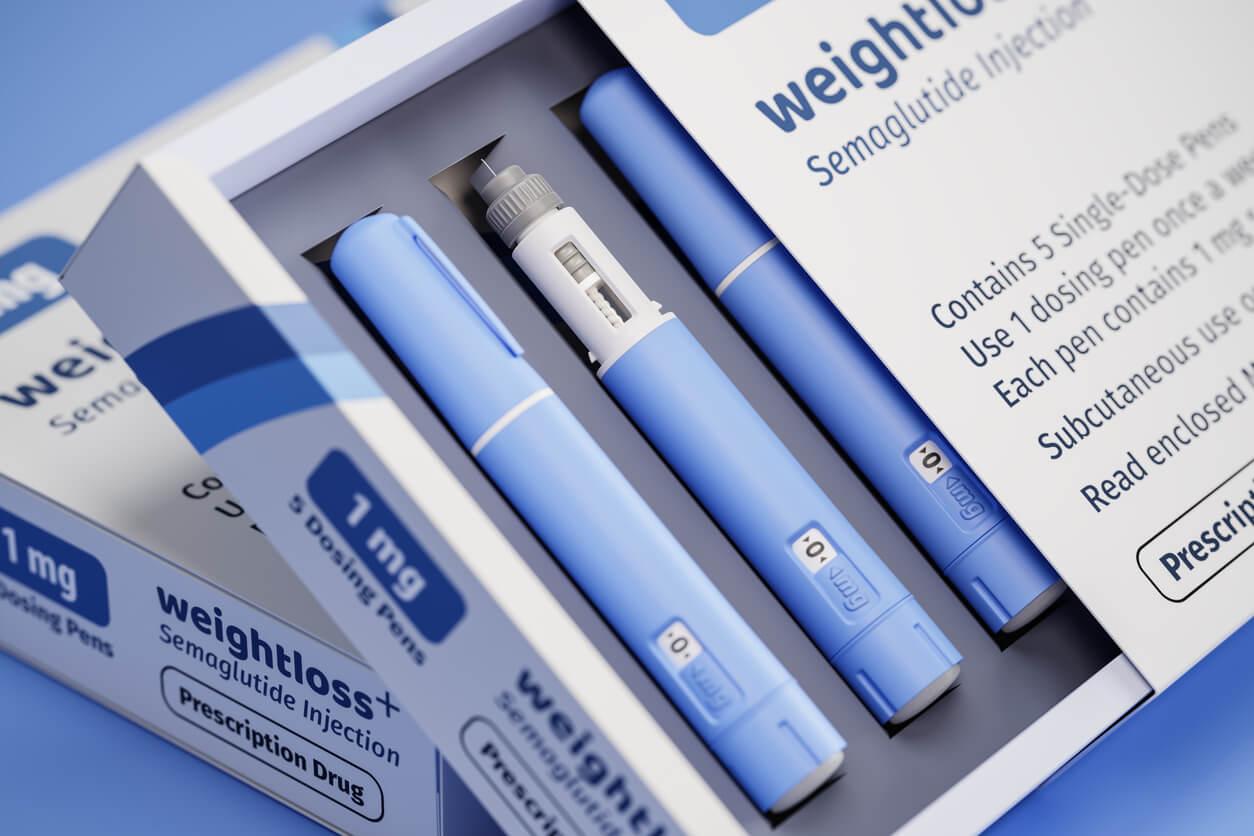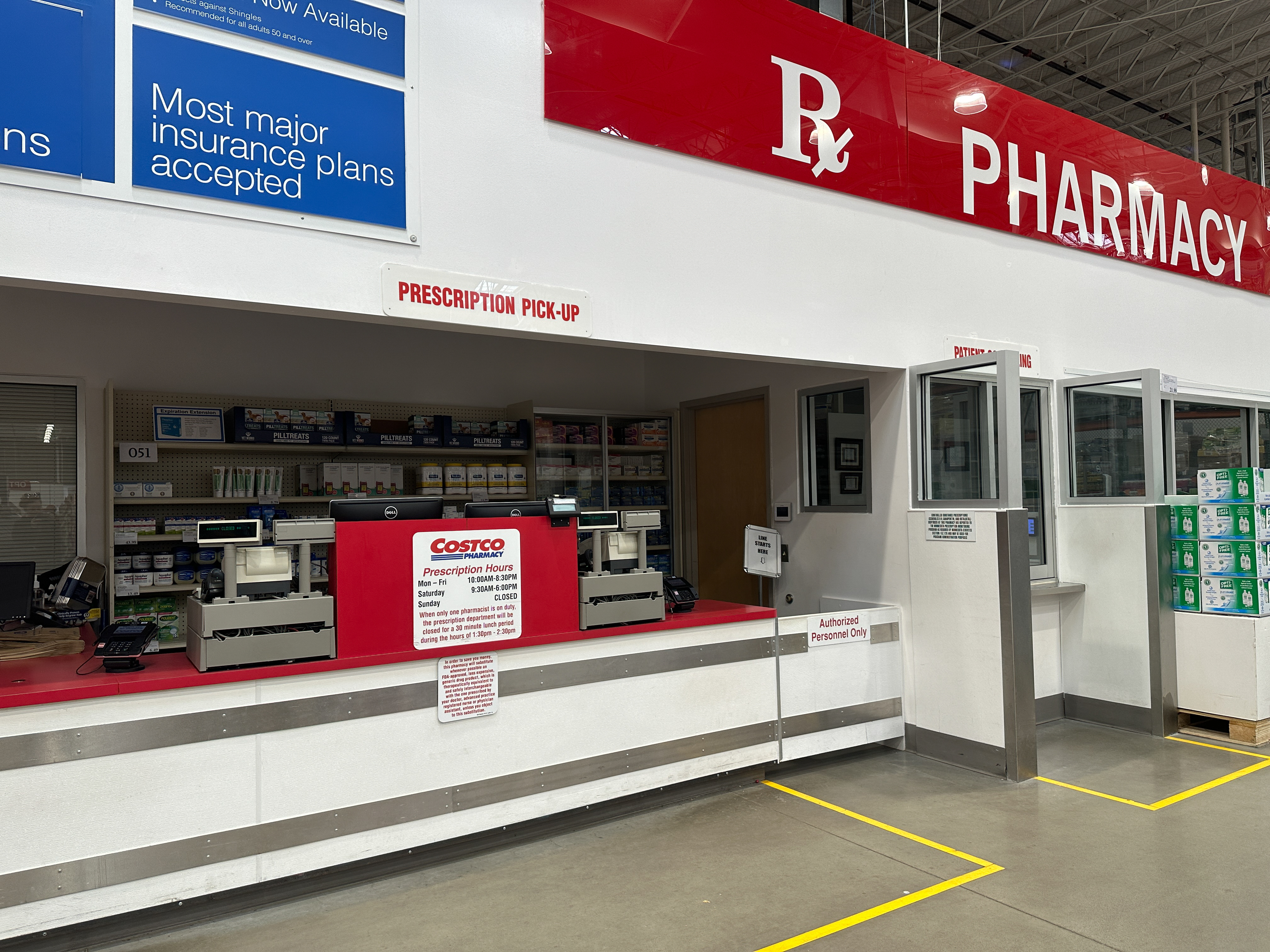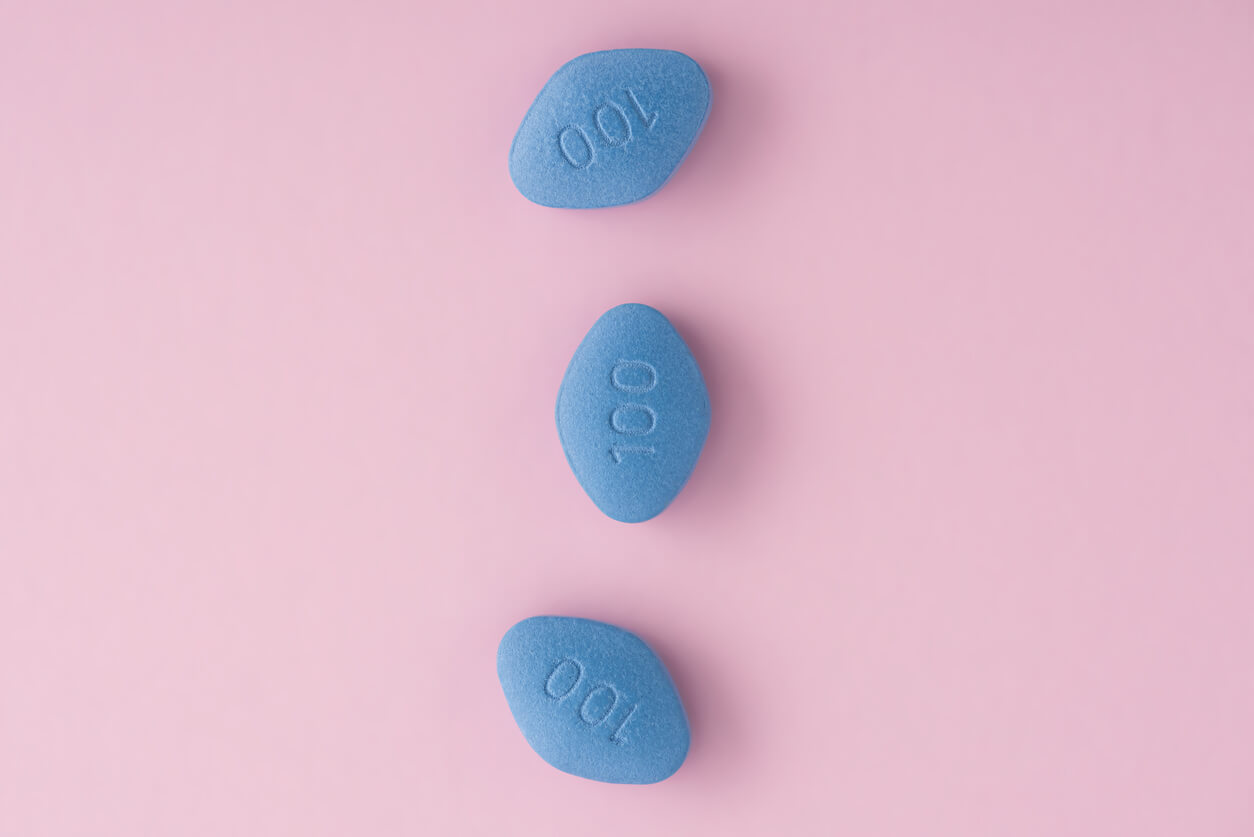How Much Does Ozempic Cost Without Insurance?
Key takeaways
- The list price for Ozempic is about $998 per month without insurance.
- Novo Nordisk, Ozempic's manufacturer, offers a direct-to-consumer program that lowers the cost to $349 per month; this option is only available to self-pay patients.
- The reduced $349 medication is available through direct-to-consumer pharmacies and can be prescribed for those who are clinically eligible .
Ozempic (semaglutide) is becoming one of the most sought-after prescription medications on the market. Prescriptions for this medication have surged by 300% in the last several years, and more than 15 million people are using it or a similiar GLP-1.
Ozempic is approved by the Food and Drug Administration (FDA) to control blood sugar levels in patients with type 2 diabetes and to treat chronic kidney disease in diabetic patients. However, when used along with a healthy diet and exercise, it has been shown to be very effective in helping patients with overweight or obesity lose weight and keep it off. Because of this, healthcare providers have been prescribing Ozempic “off-label” to help with weight management.
There’s no denying Ozempic is highly effective. But because of its limited availability, it is also very expensive. It can be even more so if you are uninsured. Here's everything you need to know about the price of Ozempic, with or without insurance.
How much does Ozempic cost without insurance?
Novo Nordisk (the manufacturer of Ozempic) lists Ozempic at $997.58 per month. However, in November of 2025, Novo Nordisk announced that uninsured patients (or those who have insurance that doesn't cover Ozempic) can access Ozempic at a reduced cash price of $349 per month via a direct-to-consumer online pharmacy. This option is only available to self-pay patients, meaning that insurance companies do not offer coverage for this option.
How can I save money on Ozempic?
Ozempic is expensive because Novo Nordisk still owns the patent on it, which isn’t set to expire until 2031. A generic (and more affordable) version of Ozempic won’t be available until then. However, you can cut down on the out-of-pocket cost of Ozempic in several ways.
1) Get a prescription from a telehealth service.
Telehealth services are often far more affordable than in-person care. More affordable provider visits can make the out-of-pocket price of Ozempic less of a barrier. Plus, you can use these appointments to discuss ways to make the price of Ozempic more affordable.
You need to speak to a licensed healthcare professional before you can get Ozempic. In-person doctor visits can be very expensive, especially if you are uninsured or have a high-deductible insurance plan.
Many insurance providers require prior authorization from a healthcare provider before they will cover a portion of your Ozempic prescription. During your visit, your provider can assist you with pre-authorization paperwork to help you get insurance coverage for your medication. Most plans will not cover the use of Ozempic for weight loss.
2) Enroll in the Novo Nordisk Patient Assistance Program (PAP)
Novo Nordisk has a savings program that provides financial assistance to patients who have been prescribed Ozempic. Note that this savings program is for patients who have been diagnosed with type 2 diabetes. You may be found ineligible for savings if you are using Ozempic only for weight loss. Fill out an application for this program here.
To qualify for the patient assistance program, you must:
- Be a citizen or legal resident of the United States
- Have a total household income that is no more than 400% of the federal poverty level (FPL). NeedyMeds has a helpful chart detailing current FPL guidelines
- Not be enrolled in Medicare or any other insurance plan with an insurance company
- Not be enrolled in any other federal or state programs like Medicaid, Low Income Subsidy, or Veterans Affairs benefits
If you meet these eligibility requirements, fill out an application to see if you can cut costs for Ozempic. If you are approved, you can get free medicine from Novo Nordisk.
3) Apply for an Ozempic savings card
If you have insurance, Novo Nordisk offers a discount card for a 1, 2, and 3-month supply of Ozempic. This discount card is reserved for patients with type 2 diabetes. It's important to note that Ozempic is currently FDA-approved for the treatment of Type 2 diabetes, not weight loss. Therefore, only those who have been prescribed Ozempic for the treatment of Type 2 diabetes are eligible for the savings card.
You must have prior authorization from a healthcare provider to be eligible for an Ozempic savings card. If you’ve already been prescribed Ozempic, fill out an online application to see if you are eligible. With a Novo Nordisk savings card, you can pay as little as $25 per month, with a maximum savings of up to $150 per month.
4) Look for prescription discount programs
Sites like Optum Perks and SingleCare offer savings programs that you can redeem to lower the cost of prescription drugs. They call these programs “coupons”, but they are more like savings cards that require membership to use.
In addition, some pharmacies let you order a 90-day supply of Ozempic at a lower cost than what you’d pay with a one or two-month supply. Talk to your healthcare provider to see if you can purchase a 90-day supply of Ozempic. You should also ask your insurance provider about how much of your prescription they will cover.
5. Pay in cash for your medication
As mentioned above, Novo Nordisk recently announced a program where self-pay patients can get Ozempic for a reduced cash price of $349 per month through the NovoCare Pharmacy. This is more affordable than the standard list price of $998 and is a great option if your insurance plan doesn't cover Ozempic.
When people say “pay in cash” for Ozempic, it doesn’t literally mean pulling out dollar bills at the pharmacy counter. Instead, it means paying directly for your prescription without going through your insurance plan. In other words, you could use a credit card, debit card, or even an HSA or FSA to pay for your medication.
Does insurance cover Ozempic?
It depends. Health insurance plans vary. Some patients may be able to get their Ozempic prescription fully paid for through their insurance. Other plans might require you with copays or deductibles.
It also depends on why you are being prescribed Ozempic. Many plans won’t cover the cost of Ozempic if it is being used for weight loss alone. Medicare Advantage and Medicare Part D, for example, will cover Ozempic if it is being used for type 2 diabetes. They may not cover the prescription if it is being prescribed for weight loss.
Talk to your insurance company before purchasing Ozempic to discuss how much of your prescription will be covered by your plan. You may be able to appeal to your insurance provider that Ozempic is medically necessary for your wellness, making it more likely to get some sort of coverage. No guarantees, though.
You should also review your insurance plan’s benefits. Benefits may provide coverage for non-essential appointments, prescription medications, and more. Get to know your insurance benefits to ensure you are getting the most out of your plan.
Are there alternatives to Ozempic?
If the cost of Ozempic is a barrier to you getting treatment, you can discuss alternatives with your healthcare provider.
GLP-1 drugs
Providers may prescribe another glucagon-like peptide-1 (GLP-1) receptor agonist to help you lose weight or manage your type 2 diabetes.
GLP-1 alternatives to Ozempic include:
- Trulicity (dulaglutide)
- Victoza (liraglutide)
- Saxenda (liraglutide)
- Mounjaro (tirzepatide)
- Zepbound (tirzepatide)
Some GLP-1 medications, like Zepbound and Mounjaro, are also available at a reduced cash price of $349 for cash-paying customers. However, some other options do not have this option available and can be quite pricey. For instance, Trulicity (dulaglutide) costs about $977 per month. Saxenda (liraglutide) is listed at $1,349.02 per month.
Discuss your health history and any medications or supplements you are taking before starting treatment with any GLP-1 drug. GLP-1 drugs come with the risk of potentially severe side effects. Informing your healthcare provider about any conditions you are managing and other drugs you are using before starting treatment can reduce your risk of harmful reactions.
GLP-1 alternatives
While there is no generic form of Ozempic or most other GLP-1 drugs, non-GLP-1 alternatives to Ozempic may have a generic version. Generic drugs are significantly cheaper than brand-name drugs. For instance, metformin (a common alternative to GLP-1 medication) only costs about $11 for a one-month supply. Contrave, only available under its brand name, costs $99 per month.
Alternatives to GLP-1 medication include:
- Bupropion-naltrexone
- Metformin
- Orlistat (generic Alli and Xenical)
- Phentermine-topiramate (Qsymia)
- SGLT2 Inhibitors (canagliflozin, dapagliflozin, empagliflozin)
- Topiramate (generic Topamax)
Talk to your provider about GLP-1 alternatives to see if they may be right for you. Tell them about any conditions that you have and any other medications you are taking to reduce your risk of harmful side effects.
How Sesame can help
Sesame offers an affordable and comprehensive online weight loss program to help you get started on your weight loss journey. Success by Sesame is a month-to-month subscription that includes a video consultation with a weight loss doctor or specialist of your choice, a prescription for weight loss medication (if appropriate), unlimited messaging with your provider, ongoing support, and more.
Maintaining a healthy weight can lead to significant health benefits, including a lower risk of heart disease, improved mobility, better sleep, and enhanced overall well-being. Get started on your weight loss journey today. Note that all prescriptions are at the discretion of your healthcare provider.
Related posts

Wegovy costs about $1,349.02 per month, or $349 per month for self-pay patients. Learn more about how much Wegovy costs with and without insurance, plus tips to save money on a Wegovy prescription.

While Zepbound may be effective, it can also be extremely pricey. In this post, we'll explore what you can expect to pay for Zepbound out of pocket, along with ways to save on this medication.

Mounjaro is effective but expensive, with a retail price of $1,069.08 per month from Eli Lilly. Read on for details on its cost with and without insurance and tips for saving on your prescription.

Learn about the available savings programs for popular weight loss medications like Wegovy, Zepbound, Ozempic, Rybelsus, Victoza, and Saxenda.

As a result of drug shortages and high prices, many people are exploring Ozempic alternatives. To make your search easier, we’ve detailed every GLP-1 on the market below – along with a comparison of cost, dosing amount and how it varies from Ozempic.

Learn how Costco Members can get prescriptions for Ozempic and Wegovy at half the price, no insurance required.

Some patients struggle to lose weight while taking Wegovy or Ozempic. Learn more about some reasons you’re not seeing results and when to talk to a healthcare provider.

Cialis and Viagra are prescription erectile dysfunction drugs. Learn more about the similarities and key differences between these ED treatment options.

Learn more about weekly cardio guidelines, exercises, and workout ideas to get you moving.
